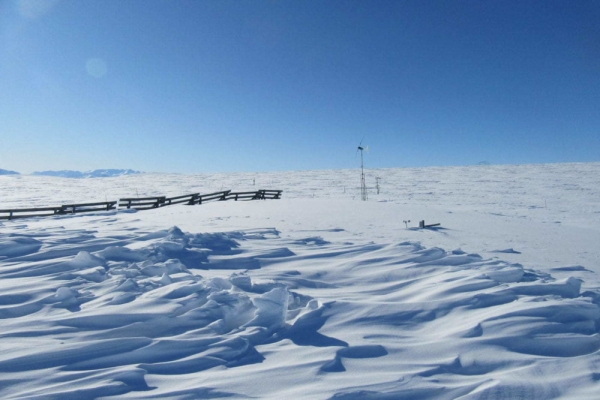With climate change, parts of the Arctic are seeing greater snowpack. Paradoxically, a thick blanket of snow can speed the melting of permafrost underneath, releasing buried stores of carbon, new research shows.
With climate change, parts of the Arctic are seeing greater snowpack. Paradoxically, a thick blanket of snow can speed the melting of permafrost underneath, releasing buried stores of carbon, new research shows.
The insight comes from a decades-long experiment near Toolik Lake in northern Alaska. Starting in 1994, scientists there began covering a swath of tundra in three to four times the usual amount of snowpack, finding that, as the region warmed, this patch actually thawed faster than other areas. Scientists said the added snow acted like a blanket during the cold months, holding in summer heat while keeping out frigid air.
As permafrost melted, microbes began to consume long-frozen plant matter in the ground, producing carbon dioxide as a byproduct. The patch of tundra with extra insulation became a year-round source of emissions. Even as shrubs began to grow on the once-frozen ground and soak up some carbon dioxide, the emissions from microbes remained greater still, according to the new study, published in AGU Advances.
Read more at: Yale Environment 360
The International Tundra Experiment at Toolik Lake in Alaska. Amanda Young/Toolik Field Station)






